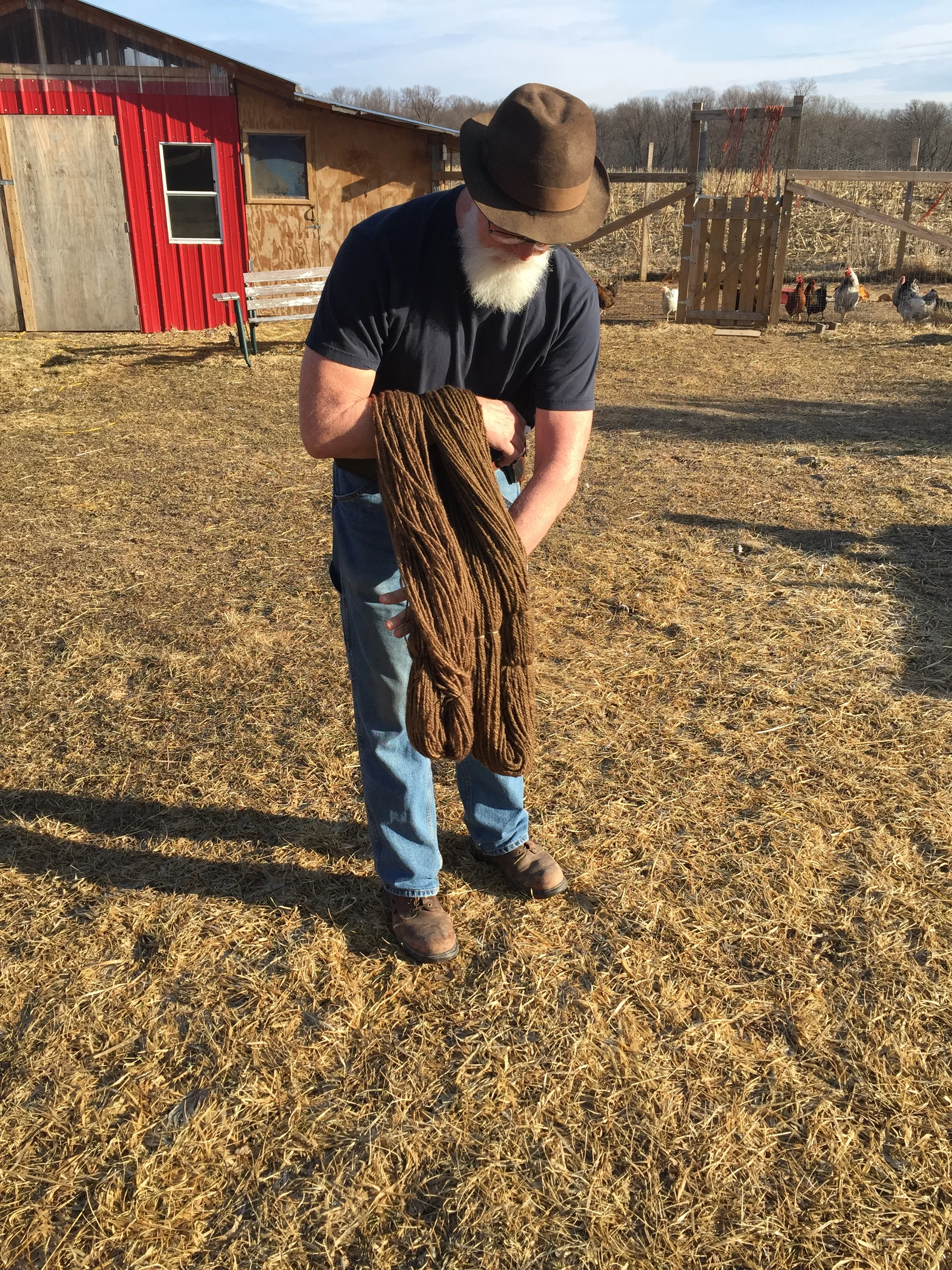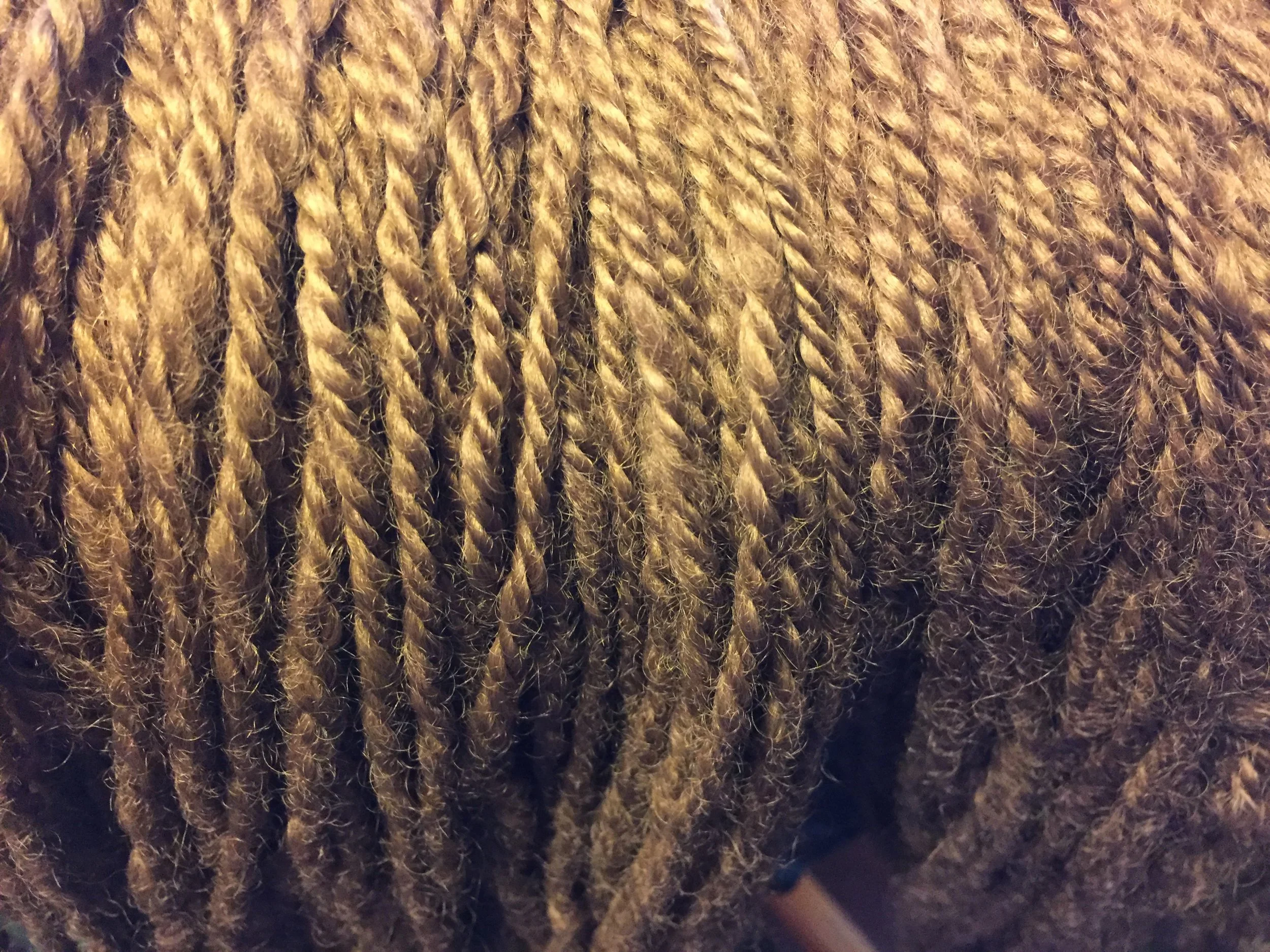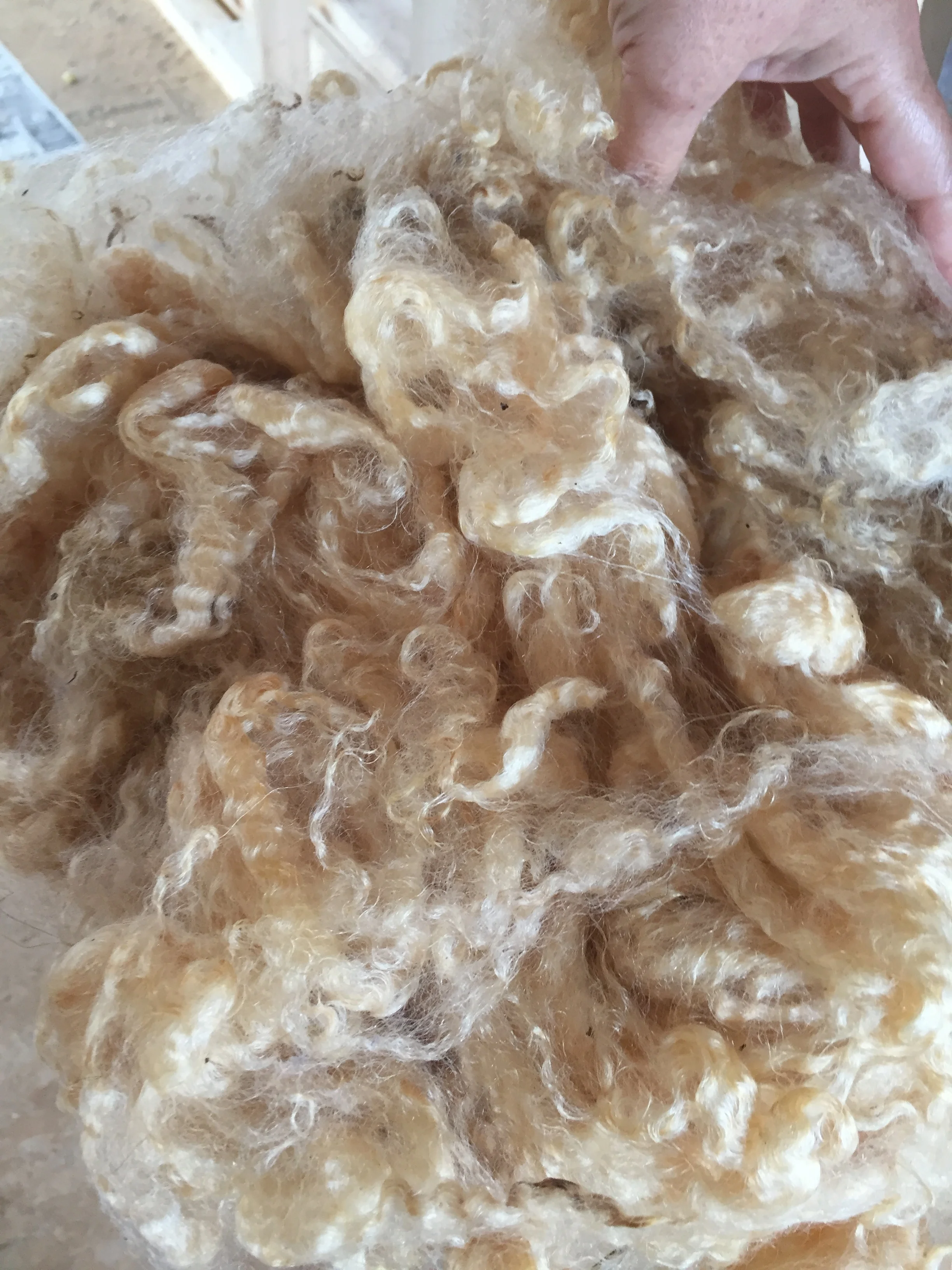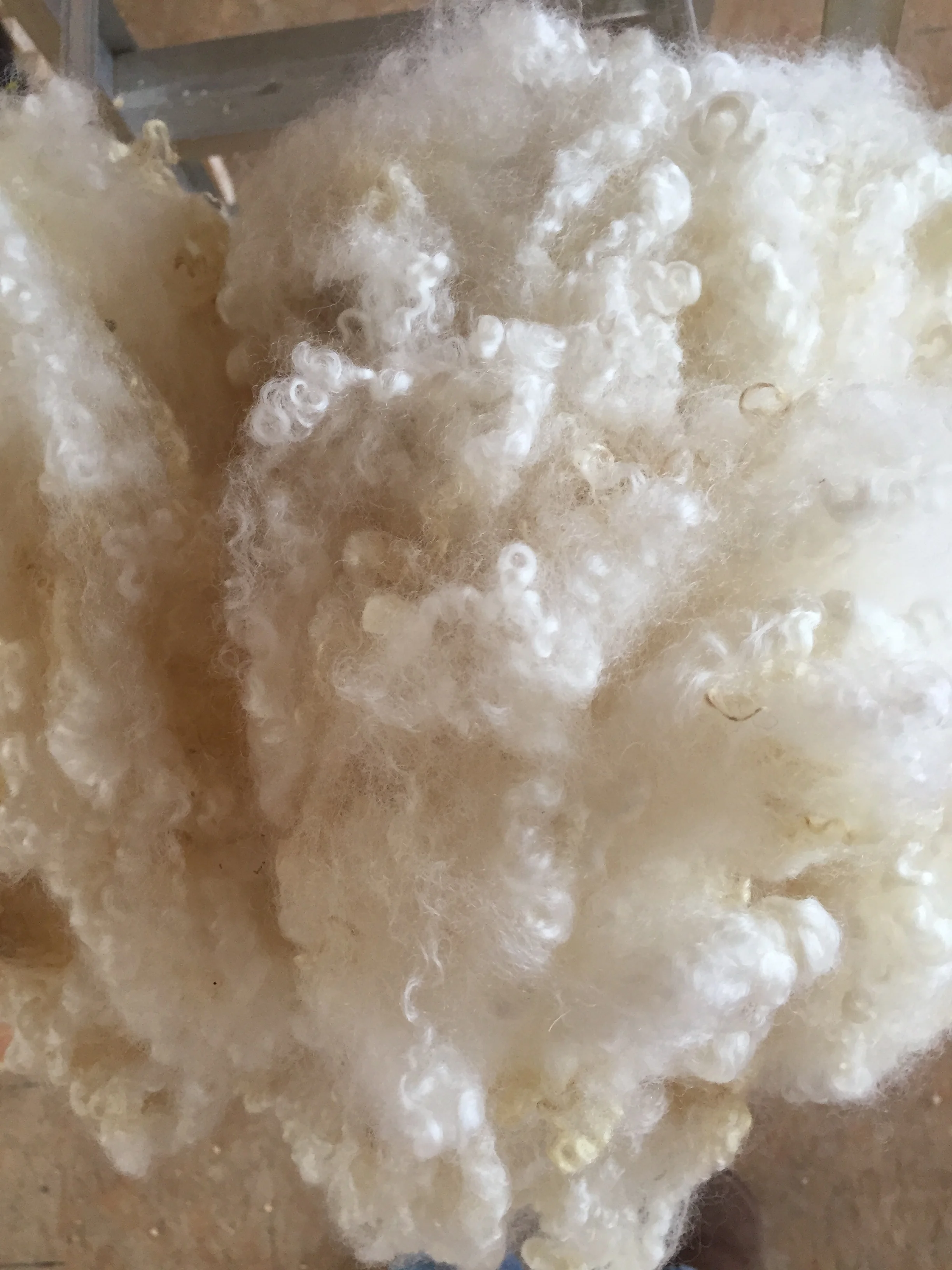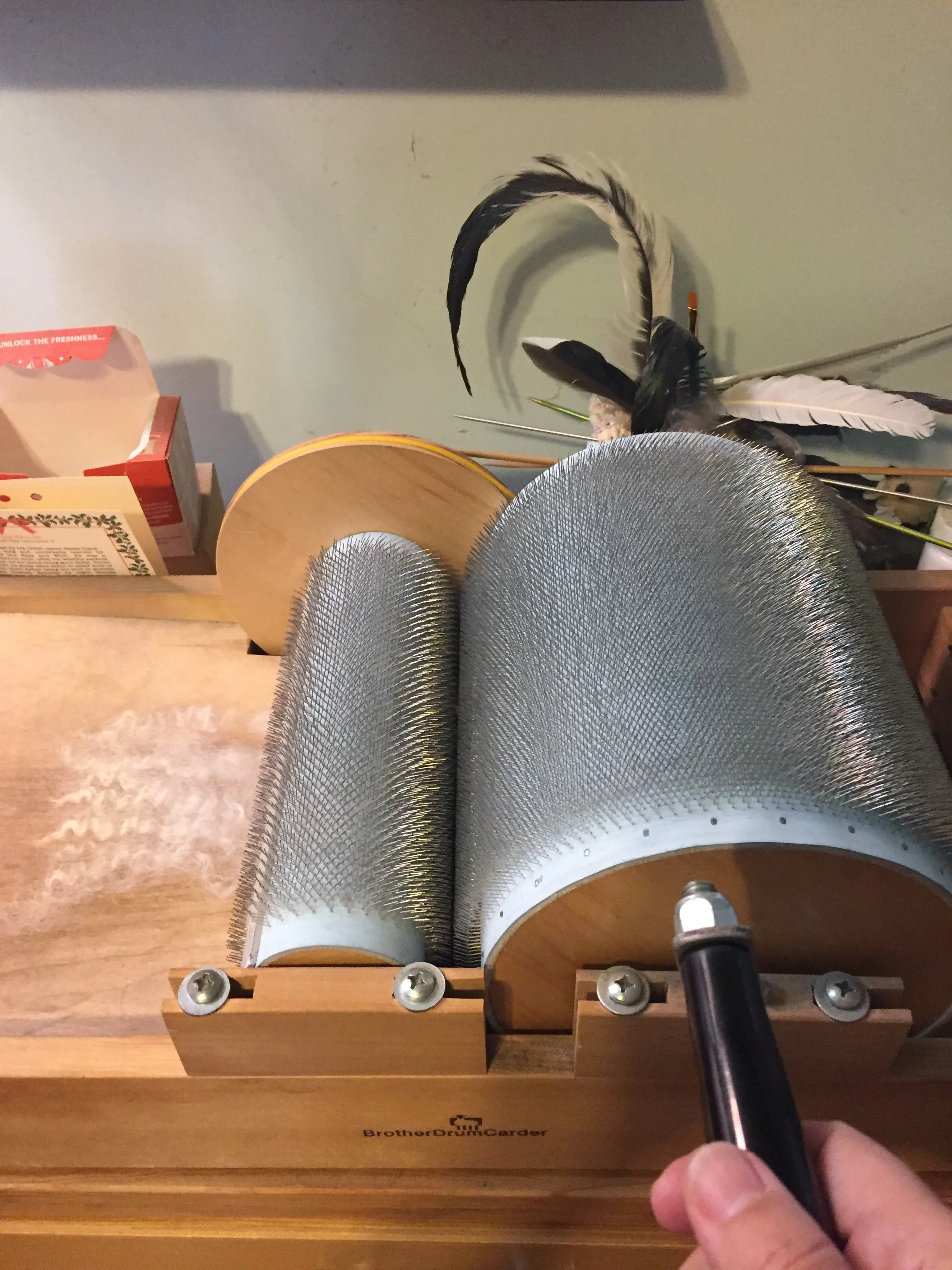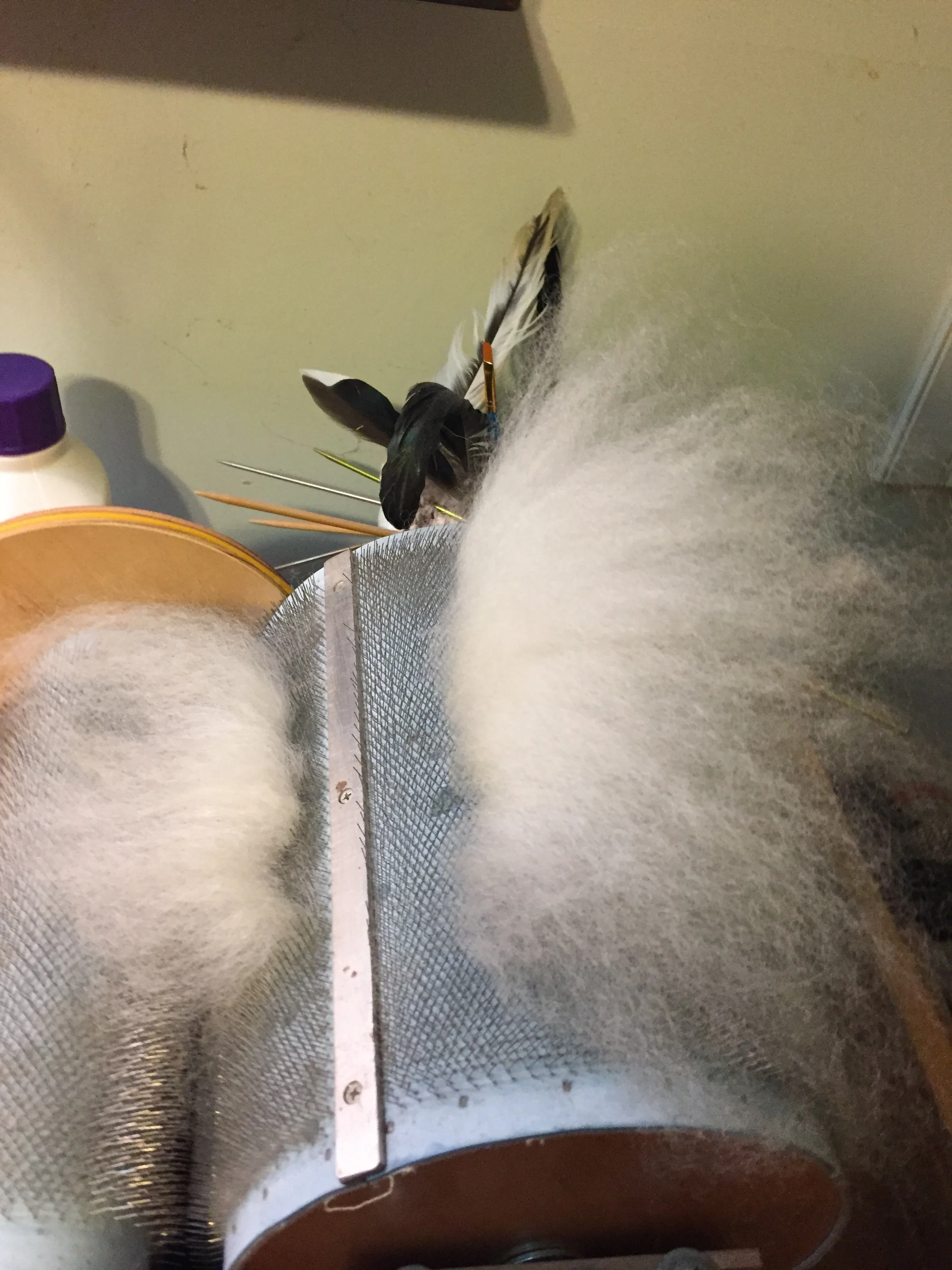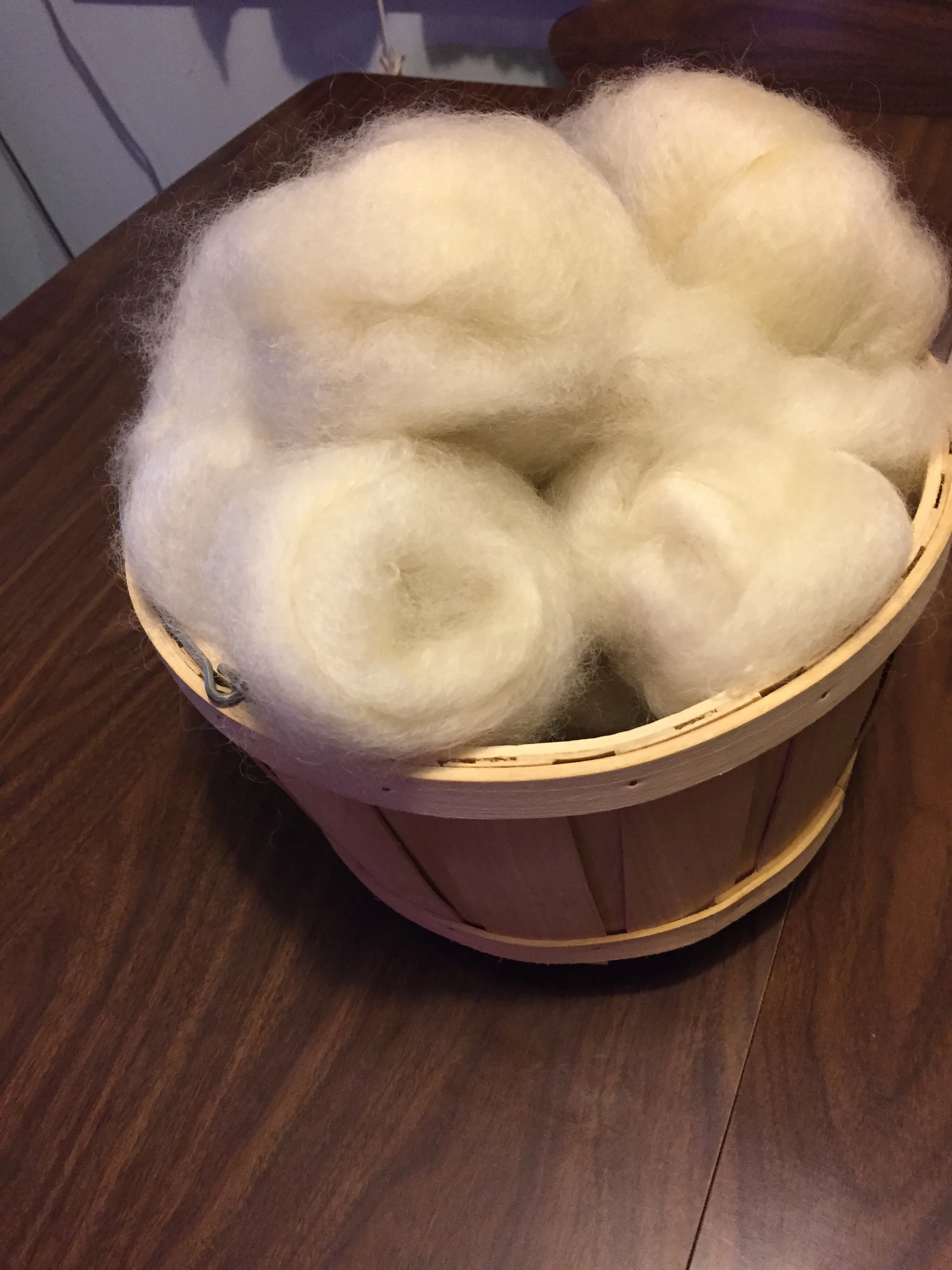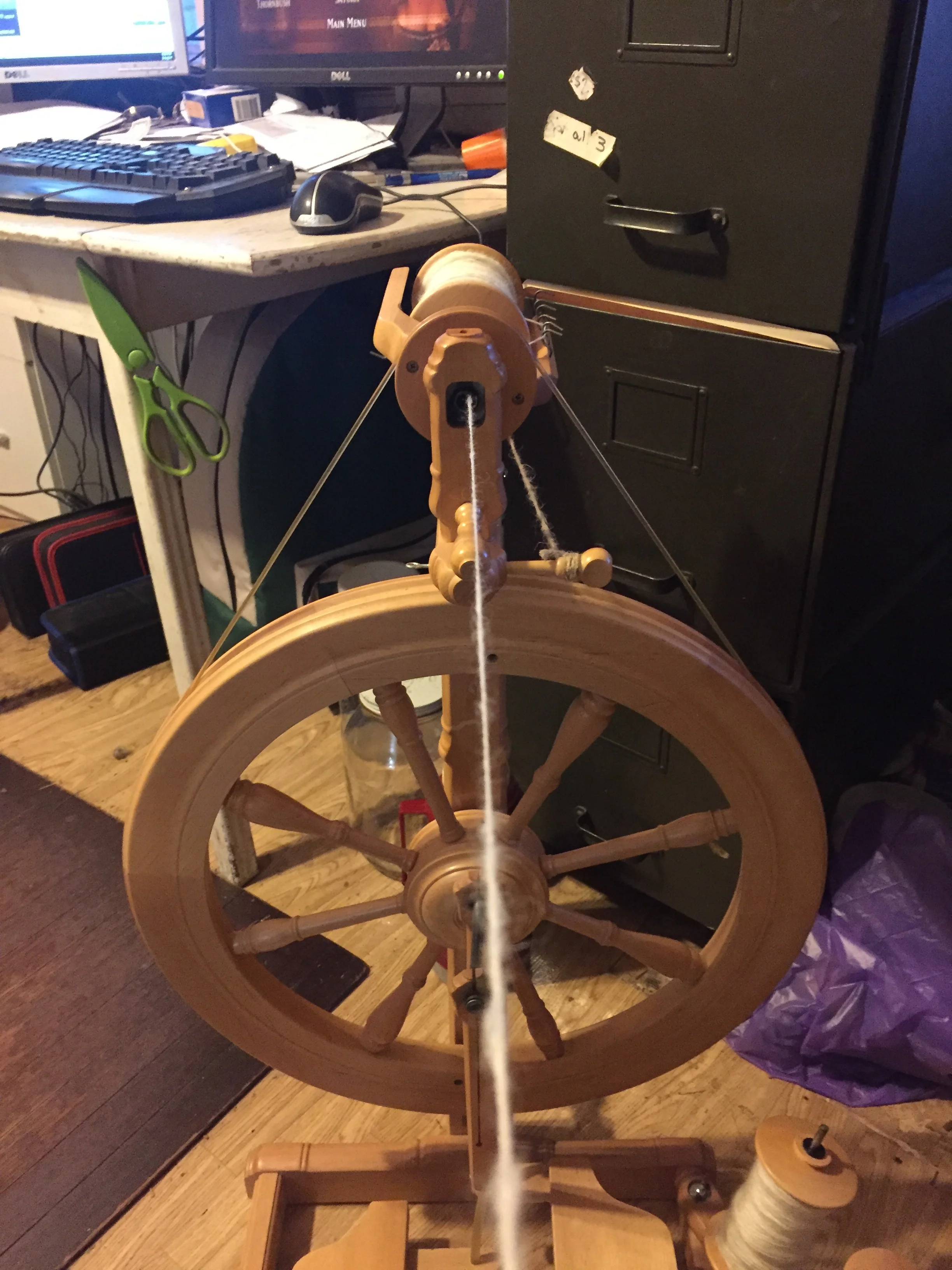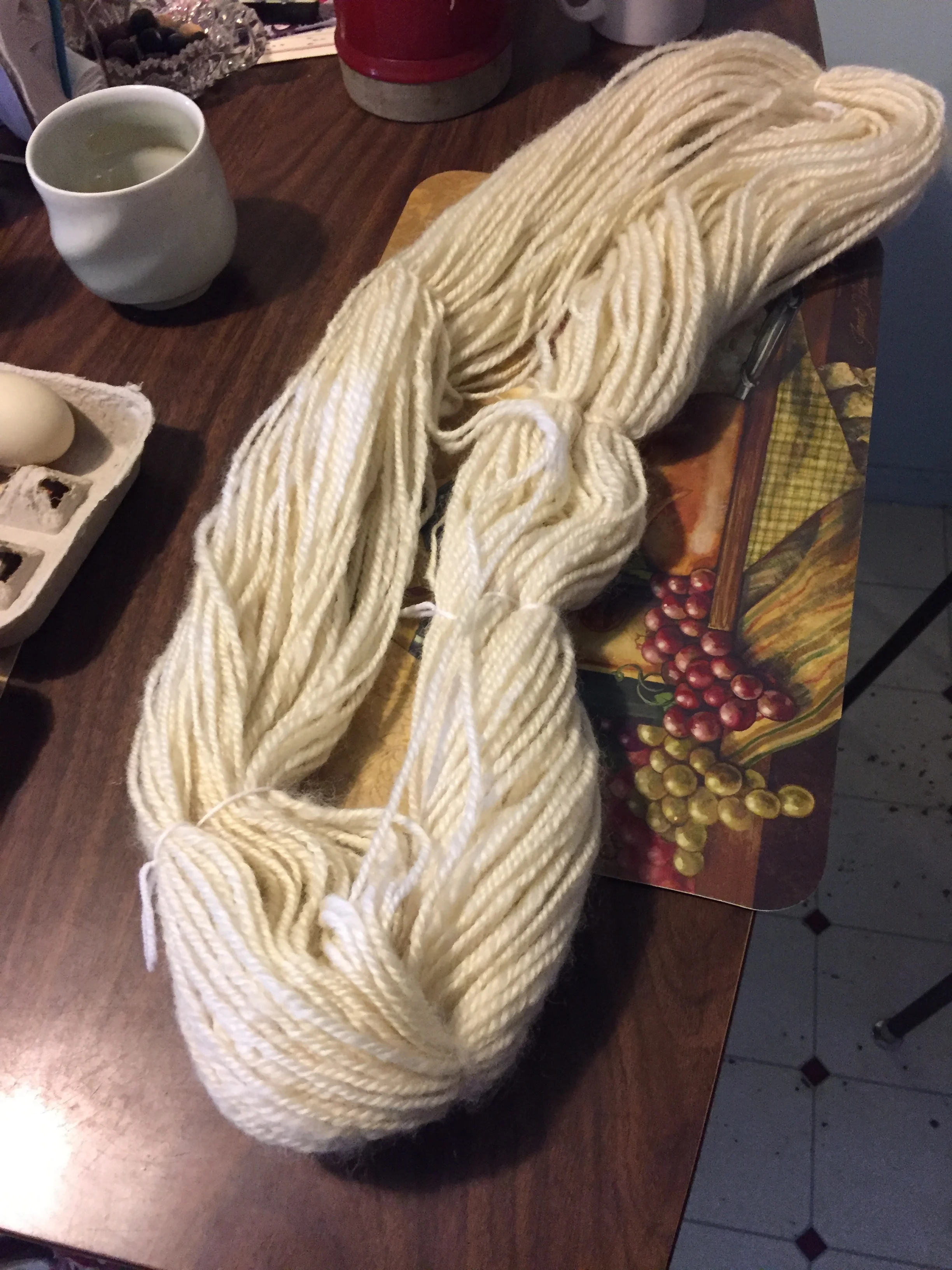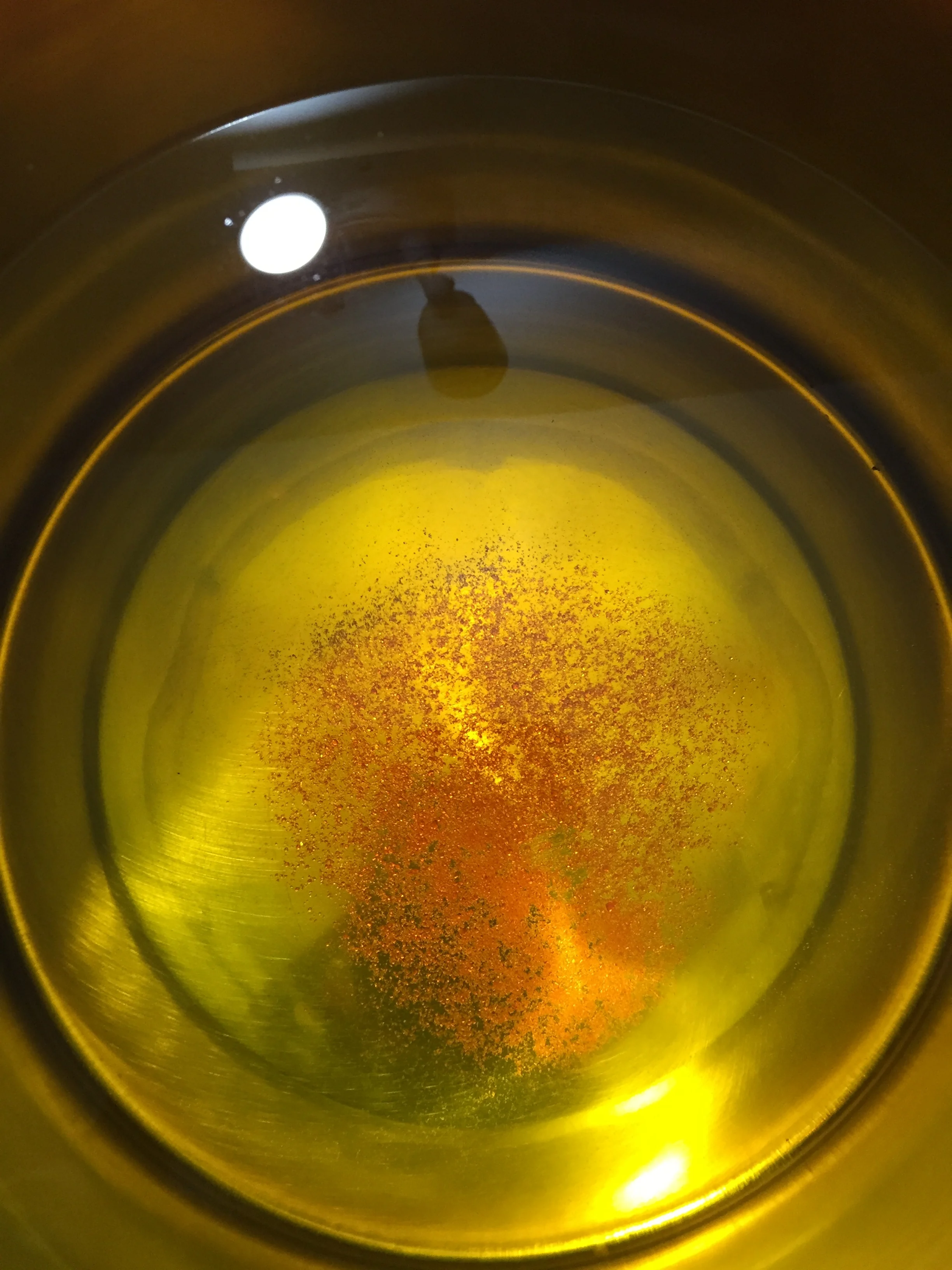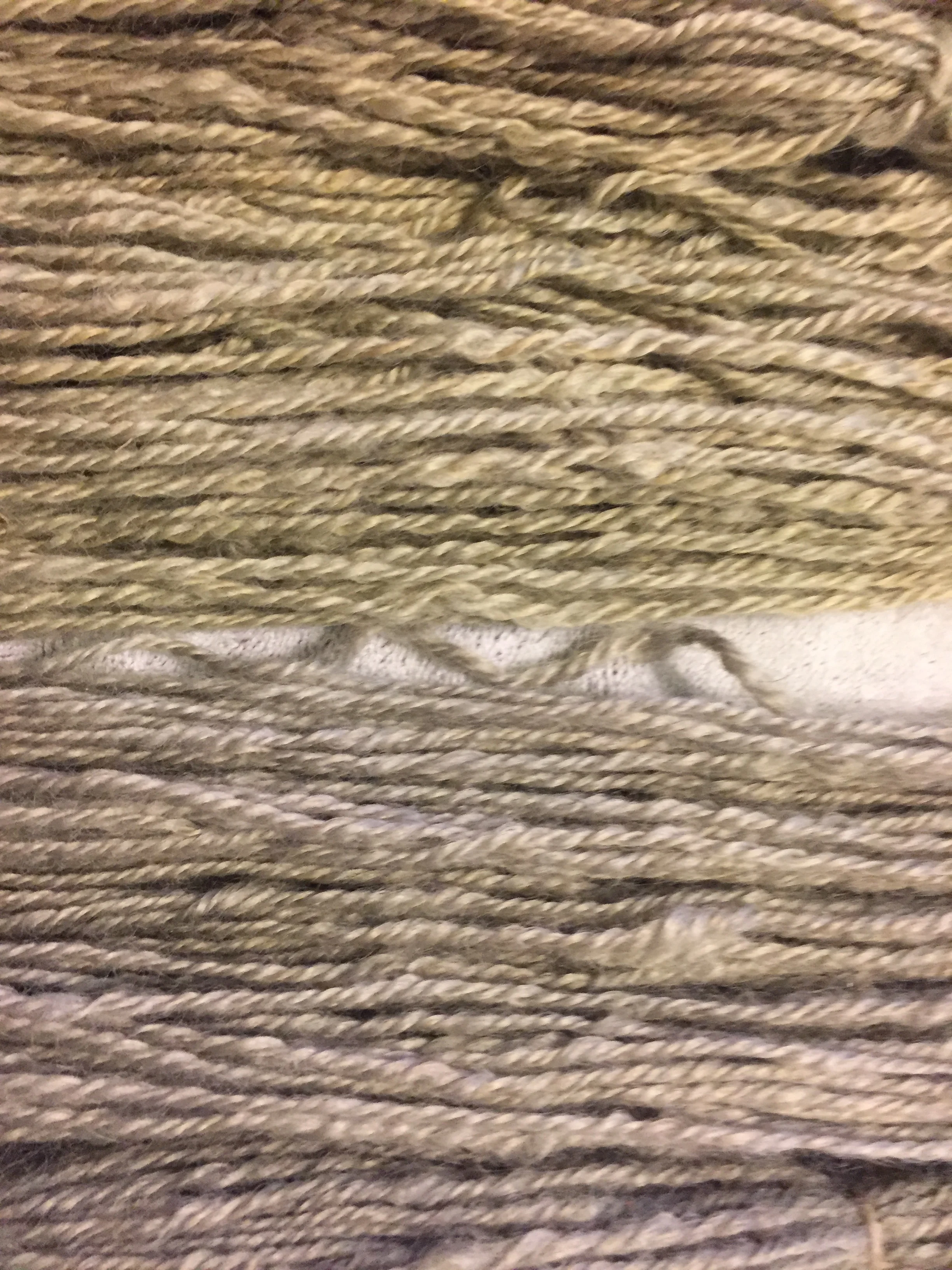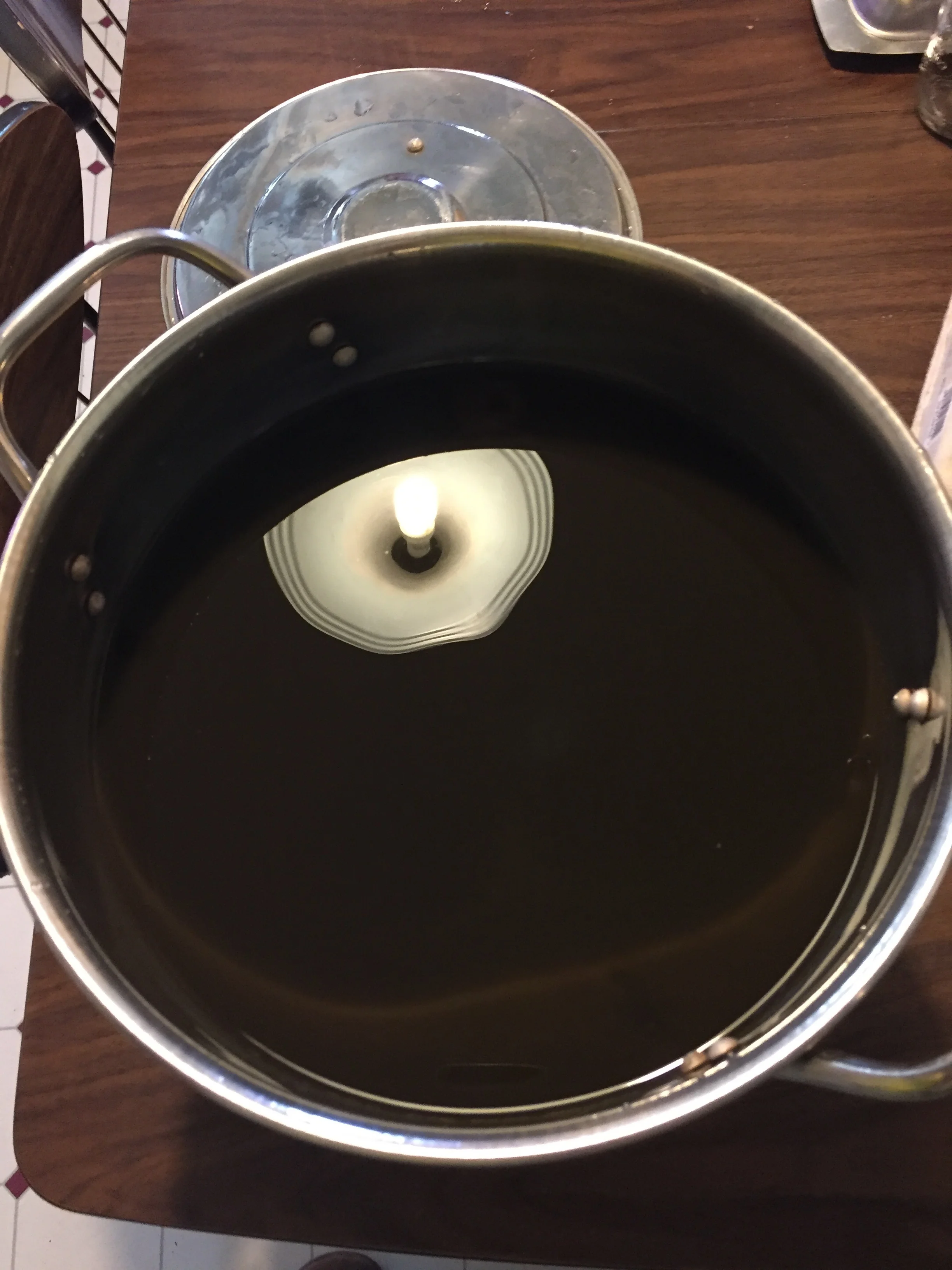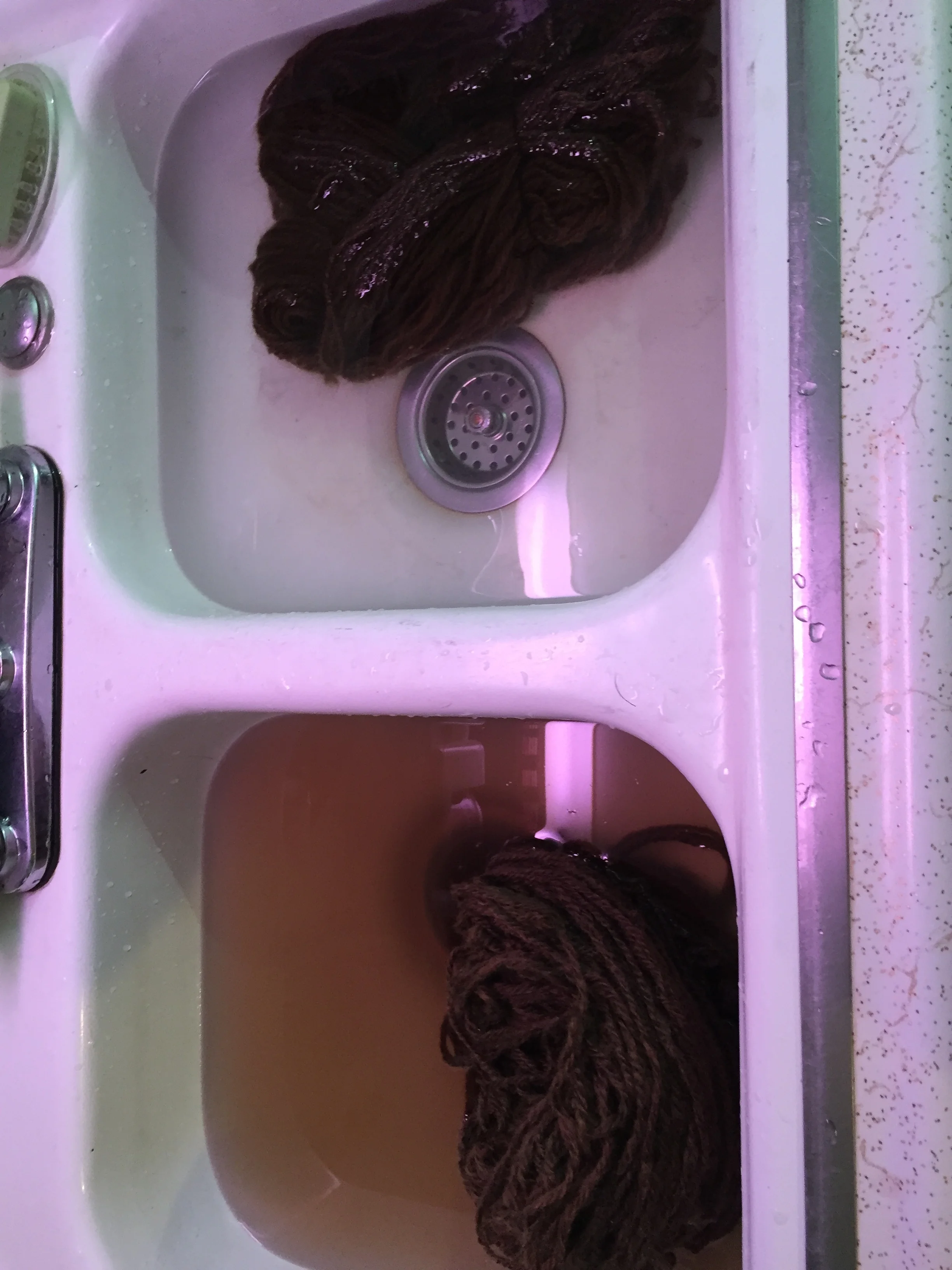Fiber journal: I love butternut!
As promised, the results of my tree bark experiment:
Michael modeling a pound of yarn
Okay, one more as a close up:
Chrome mordant on left; chrome and cream of tartar on right. Close, but subtly different.
So now for the rest of the story. I bought a Blue Face Leister fleece last May and finally got around to cleaning it in February while my left arm sprain healed.
Dirty fleece, straight off the sheep
I washed the fleece in small batches in the kitchen sink, using a cookie rack to lift the fleece in and out of the water to minimize felting. Hot water and Dawn dish soap and multiple washes, and then a vinegar rinse, and then a plain water rinse.
Clean fleece. Look at those lovely locks!
I separated my locks and put them through my carding machine.
Yes, I do have feathers everywhere!
Once I had the teeth of the carder full, the wool comes off in a batt.
No cutting the batt off! Keep those fibers long.
Batts are bulky, so I predraft mine and roll them into balls.
Baskets. I love baskets.
The roving gets single spun with a right twist.
A Kromski Sonata that breaks down and stores well. You can see it's case under the table in the background.
Three spools of singles then get a left twist ply. Changing directions make the strands grab each other and give strength to the yarn.
A kit built wheel with a larger spindle and my three smaller spindles on a lazy kate.
I made two skeins, each weighing about 8 oz, and measuring about 175 yards.
Spinning worsted (keeping all the fibers aligned from cut end to tip) increases luster.
The twist is set after the final ply by soaking the skein in hot water. The warmth and wet allow the fibers to relax and maintain their twist.
The skeins went into a mordant bath made by dissolving a teaspoon of potassium chromate in about 2 gallons of water. I added a tablespoon of cream of tartar to one of the two pots. The recipe called for 41/2 gallons to a pound of wool, but I don't have a pot that big.
Potassium chromate. Our water is naturally soft.
The yarn went into cold water. It then came to a boil and simmered for an hour. Lids on after that, waiting overnight, letting that mordant penetrate that wool!
Chrome on top, chrome and cream of tartar on bottom.
Then came the excitement: putting the wool in the butternut extract (twice sieved through cheesecloth and diluted equal parts with water to make 2 gallons per pot).
I had my doubts at this point.
Boiled for half an hour then rinsed until the water ran clear.
And you've seen the final result! Yes. This is a lot of work for a pound of yarn. But it is unique, lustrous, wonderful yarn you would be hard pressed to find for sale anywhere. Now to make it into a garment!
